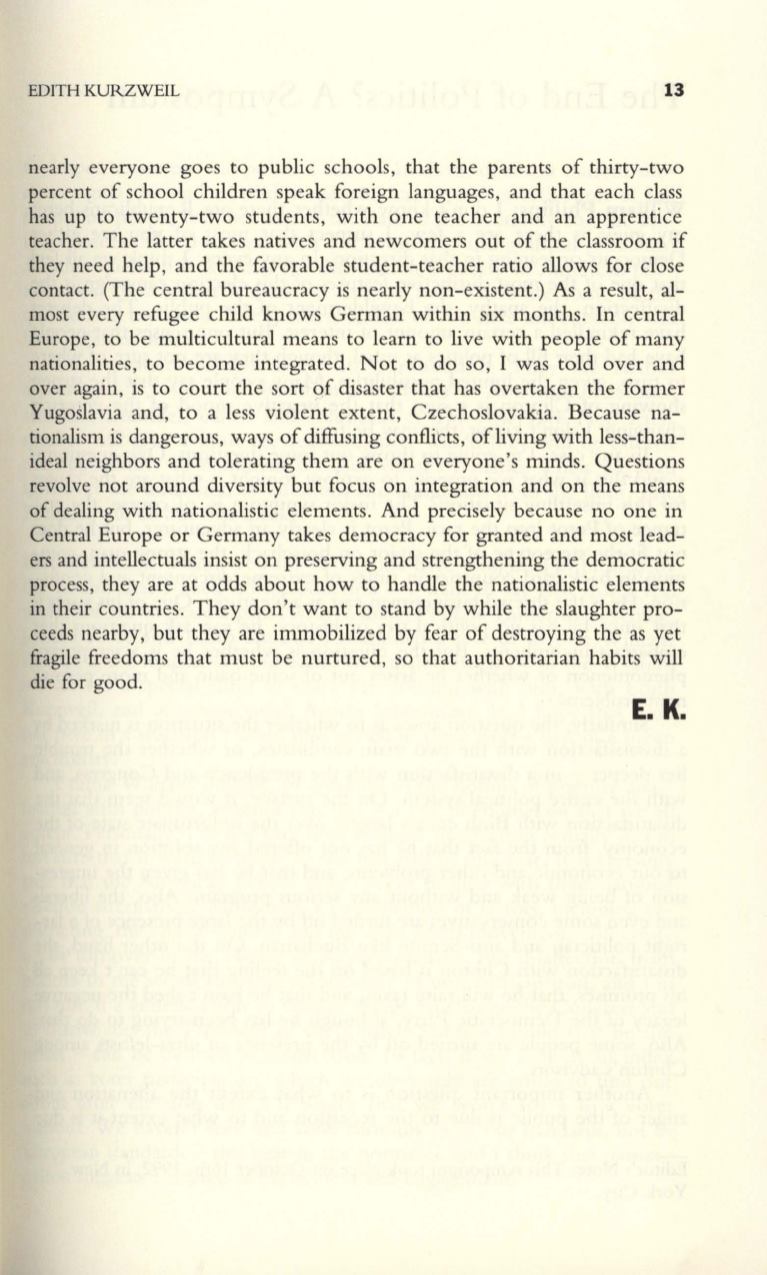
EDITH KURZWEIL
13
nearly everyone goes to public schools, that the parents of thirty-two
percent of school children speak foreign languages, and that each class
has up to twenty-two students, with one teacher and an apprentice
teacher. The latter takes natives and newcomers out of the classroom if
they need help, and the favorable student-teacher ratio allows for close
contact. (The central bureaucracy is nearly non-existent.) As a result, al–
most every refugee child knows German within six months. In central
Europe, to be multicultural means to learn to live with people of many
nationalities, to become integrated. Not to do so, I was told over and
over again, is to court the sort of disaster that has overtaken the former
Yugoslavia and, to a less violent extent, Czechoslovakia. Because na–
tionalism is dangerous, ways of diffusing conflicts, of living with less-than–
ideal neighbors and tolerating them are on everyone's minds. Questions
revolve not around diversity but focus on integration and on the means
of dealing with nationalistic elements. And precisely because no one in
Central Europe or Germany takes democracy for granted and most lead–
ers and intellectuals insist on preserving and strengthening the democratic
process, they are at odds about how to handle the nationalistic elements
in their countries. They don't want to stand by while the slaughter pro–
ceeds nearby, but they are immobilized by fear of destroying the as yet
fragile freedoms that must be nurtured, so that authoritarian habits will
die for good.
E. K.


